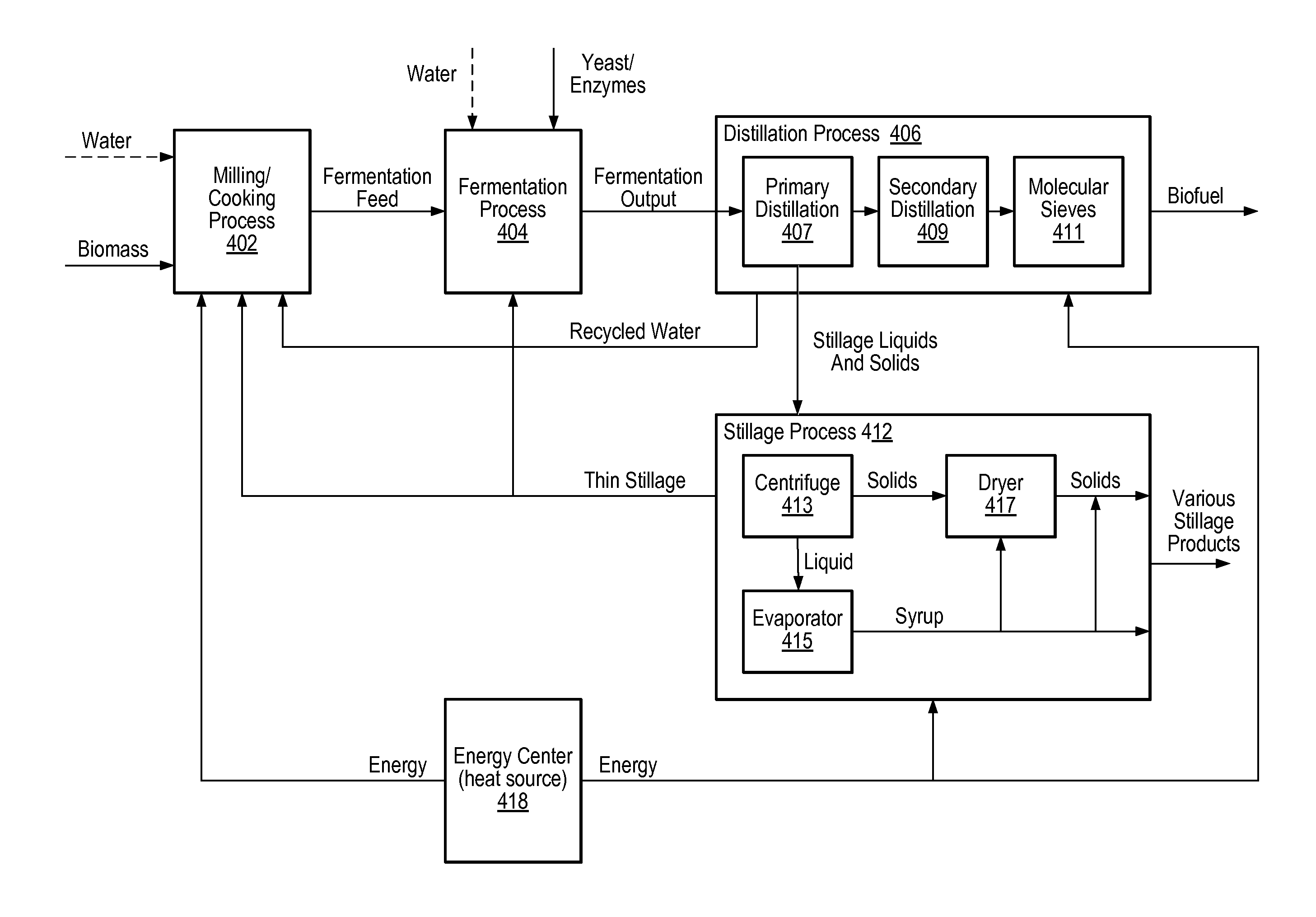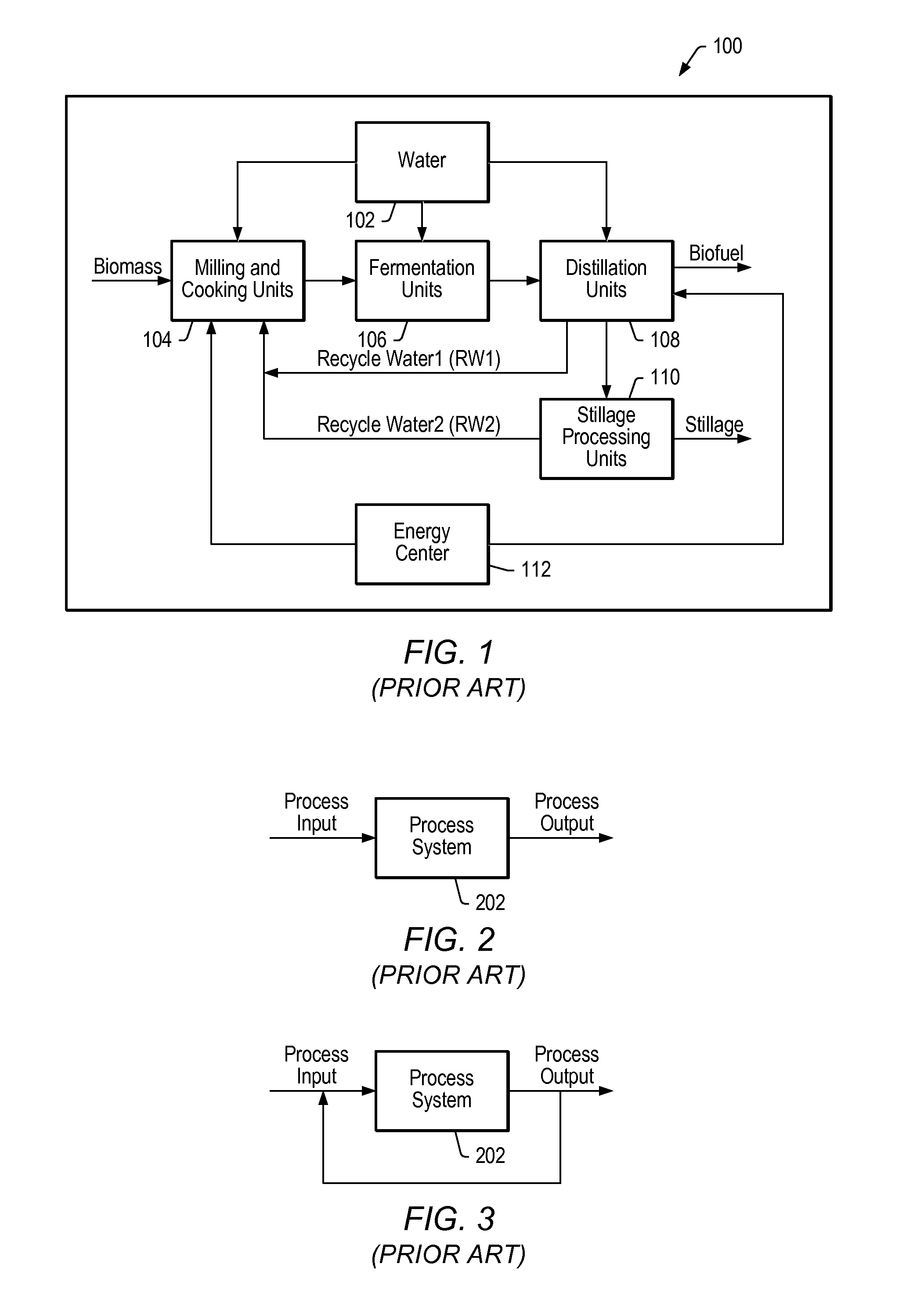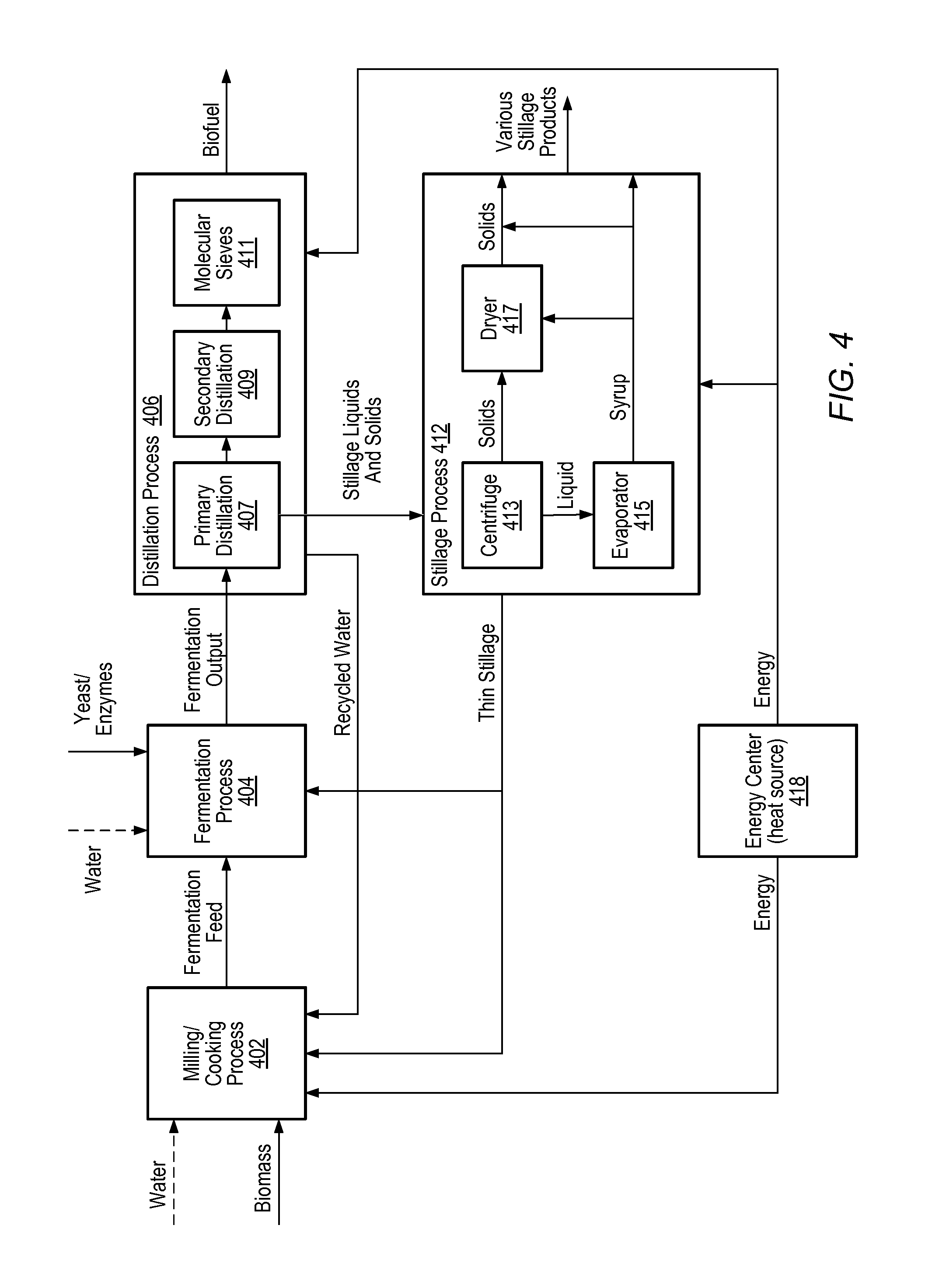Integrated model predictive control of distillation and dehydration sub-processes in a biofuel production process
a biofuel and sub-process technology, applied in adaptive control, process and machine control, instruments, etc., can solve the problems of high plant failure rate, poor business judgment, inefficient engineering design, and 45% of the 163 existing commercial biofuel plants were operational
- Summary
- Abstract
- Description
- Claims
- Application Information
AI Technical Summary
Benefits of technology
Problems solved by technology
Method used
Image
Examples
Embodiment Construction
INCORPORATION BY REFERENCE
[0046]The following references are hereby incorporated by reference in their entirety as though fully and completely set forth herein:
[0047]U.S. provisional application Ser. No. 60 / 863,759 titled “Model Predictive Control of a Biofuel Production Process” filed Oct. 31, 2006, whose inventors were Michael E. Tay, Maina A. Macharia, Celso Axelrud, and James Bartee.
Definitions—Biofuel Production Processes
[0048]Biofuel—any fuel (or fuels) derived from biomass, i.e., from recently living organisms or their bi-products.
[0049]Biofuel production process—a fermentation process surrounded by auxiliary processing units to produce biofuel, other fermentable alcohols for fuel, and high-capacity food grade or chemical grade alcohols.
[0050]Biofuel production—a measure of biofuel production within or at the end of a production process. May include measurements such as concentration (e.g., wt. %, volume % or wt. / vol. %), volume (e.g., current gallons biofuel within a ferment...
PUM
 Login to View More
Login to View More Abstract
Description
Claims
Application Information
 Login to View More
Login to View More - R&D
- Intellectual Property
- Life Sciences
- Materials
- Tech Scout
- Unparalleled Data Quality
- Higher Quality Content
- 60% Fewer Hallucinations
Browse by: Latest US Patents, China's latest patents, Technical Efficacy Thesaurus, Application Domain, Technology Topic, Popular Technical Reports.
© 2025 PatSnap. All rights reserved.Legal|Privacy policy|Modern Slavery Act Transparency Statement|Sitemap|About US| Contact US: help@patsnap.com



